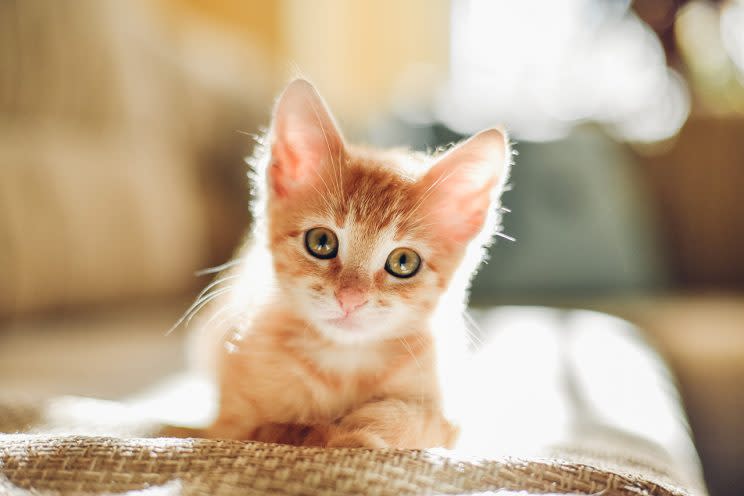Looking at Adorable Kitten and Puppy Photos Could Save a Stale Marriage

Is there any way to stay in love with a person forever? This question is older than marriage itself. We’re not just talking about that biochemical spark that inevitably changes into something steadier; we’re talking about genuinely liking your partner for the long run.
A new study may have stumbled upon a surprising method to increasing marital satisfaction: Look at cute puppy photos.
Well, it’s not quite as simple as that, but it’s pretty close. Lead author James K. McNulty of Florida State University and his team were curious about the fact that relationship satisfaction declines over time, even when couples’ behavior remains almost exactly the same. This also means that changing behavior doesn’t necessarily solve all marital problems. What may change instead is a person’s automatic associations with a spouse. People may begin associating their significant others with negative emotions, without even realizing it.
“One ultimate source of our feelings about our relationships can be reduced to how we associate our partners with positive affect, and those associations can come from our partners but also from unrelated things, like puppies and bunnies,” McNulty said to Psychological Science, the journal that also published his study. So, they wondered, could you use those unrelated things to improve that positive affect between partners?
The team studied 144 couples under the age of 40 who had been married for less than five years and had them look at a stream of images on a computer once every three days for six weeks. The experimental group’s photos for this process, called evaluative conditioning, included pictures of their spouses paired with positive images, such as baby animals, beach scenes, pizza, cookies, or positive words like wonderful and fabulous.
“We scoured the Internet to find photos that seemed likely to elicit positive affect in most people and pretested a bunch to find out which ones were most positive,” McNulty tells Yahoo Beauty. “We simply wanted to make people feel good while viewing their partners.”
The control group saw their spouses paired only with neutral images. Before, during, and after this process, researchers measured the couples’ automatic partner attitudes (with a test that compares response time with positive and negative words) — something that occurs on a subconscious level. The couples also rated their marriage quality and satisfaction on three standard questionnaires.
The results showed that both automatic partner attitudes and self-reported marital satisfaction improved significantly in the group who stared at puppies and sunsets. What’s more, that effect was still in place two weeks after the conditioning ended. Further analysis of the results seemed to show that the conditioning improved the automatic attitudes, which in turn improved the self-reported satisfaction.
McNulty says he was surprised the experiment worked as well as it did. “It just doesn’t seem like something that should work, according to most existing research on relationships,” he tells Yahoo Beauty. “However, according to theories of social cognition, it should. So, we were a bit agnostic.”
This is not to say that couples having difficulties should look at some happy photographs and hope for the best. Positive behavior is still an important factor in creating positive automatic associations, and unrelated stimuli — like those puppy pics — will likely go only so far on their own.
But the authors suggest that this kind of conditioning could benefit certain types of couples, such as those in long-distance relationships. There’s a reason the Department of Defense funded this research in the first place — they were looking for ways to help deployed soldiers maintain healthy relationships.
“We have requested additional funding to do some work to see if we can refine the procedure for use among people physically separated from their partners, or perhaps as a supplement to marital therapy,” McNulty says.
However, this isn’t a green light to try this at home quite yet, he cautions. “It shows such conditioning is possible, but we have a ways to go to fully understand it,” McNulty says. “What we would suggest is that people attempt to intersperse fun activities into their necessary mundane activities.”
Read more from Yahoo Beauty + Style:
Transgender Hero Janet Mock: ‘Glam Is a Gateway to Survival’
#AcneUnfiltered: Honest and Real Stories of Struggling With Acne
Follow us on Instagram, Facebook, and Pinterest for nonstop inspiration delivered fresh to your feed, every day. For Twitter updates, follow @YahooStyle and @YahooBeauty.
